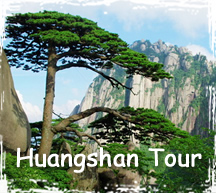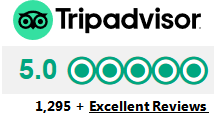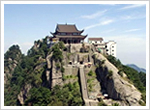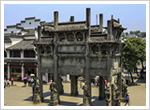Anhui Tour
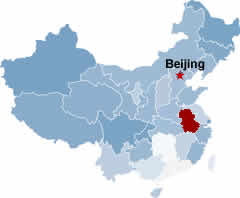
Abutting Jiangsu to the east, Zhejiang to the southeast, Jiangxi to the south, Anhui is a low-profile province in the east region of China with Hefei as its capital city. The Yangtze River and Huai River cross Anhui Province from the west to the east, geographically bisecting the province into two parts - the northern Anhui ( north of Yangtze River ) and the southern Anhui (south of Yangtze ). Topographically the northern Anhui is part of the North China Plain and part of the Huai River Watershed as well, both flat and densely populated while the southern Anhui features rugged hills and ranges winding through the southeastern Anhui.
Anhui's main cultural and historical sights are all scattered in the south and southeast regions, represented by the Huizhou-type villages, white-washed walls and back-tiled roofs, and the mountainscapes of Huangshan. 150 km southwest of Huangshan, Jiuhushan is noted for its unworldliness and tranquility. Anhui's green mountains and the bucolic life in the countrysides are a great escape from the hustle and bustle of China's bigger cities.
| Just a reminder People who browse Anhui Tour are also interested in checking out Huangshan tour. |
Anhui Tourist Map
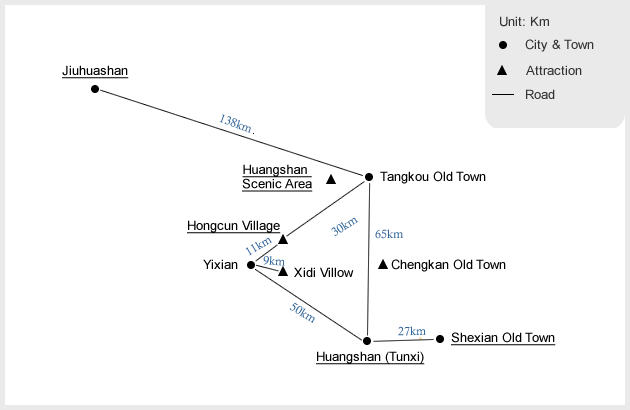
Anhui Escorted Tour & Tailor-Made Tour
| » Mount Huangshan and Hui-type Village Tour | |||
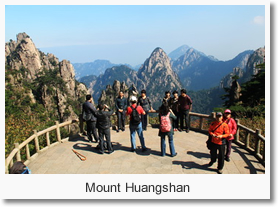 |
|||
| » Mount Huangshan Hui-Type Village and Jiuhuashan Tour | |||
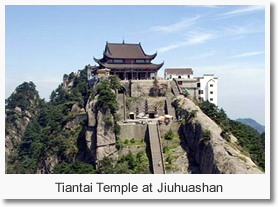 |
|||
| » Anhui Tailor-Made Tour | |||
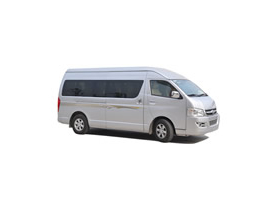 |
Visit Anhui? If none of our sample tours meets your expectation and you would like to plan your own Anhui trip, just tell us the things you want to see and do, the hotels you want to stay, we will customize a tour to fit your travel needs. You will receive our proposed itinerary with estimated tour cost within 24 hours. |
||
Anhui Travel Information
When to Visit
Anhui climate has two prominent features - the warm temperate and semi-humid monsoonal climate in the northern region ( north of Huai River ) and the sub-tropical, humid, monsoonal climate in the southern region ( the area along Yangtze River and south of Yangtze River). The annual temperature in the south Anhui is higher than that in the north Anhui. Generally, Anhui has a mild climate, abundant sunshine and distinctive four seasons. Most of the tourist attractions in Anhui are concentrated in the south region which features the sub-tropical, humid, monsoonal climate. In spring (March - May), the weather is very comfortable with flowers blooming, streams gurgling, hills turning green and spring wind breezing. Typhoon or heavy rain may possibly hits the south Anhui in June. Summer (June,July and August) is hot and humid. The two months see almost all the scenic areas are packed with domestic tourists due to the school summer vacation time of July and August.
September, October and November are also the idea months to visit the south Anhui Most of the period is sunny with mild temperature. The foliage falls in November when it turns yellow, orange and red with amazing autumn hues. You are kindly advised to skip over China National Holiday in October (October 1-3).
December, January and February are the coldest months in Anhui. Winter is not the colorful season, but most of the places in Anhui will be quiet and peaceful and people enjoying fewer crowds with great discounts on hotels, admission fees and more. The mountains and trees in Huangshan are covered with snow and ice making the entire area appear like a crystal wonderland.
Get There & Around
Most of the natural and historical sights are centered around Tunxi ( now the city of Huangshan ) in the south Anhui. This region is easily accessible by road, train and even flight. You may take long-distance buses directly from Hangzhou, Shanghai, Tongling and Heifei; You can get to Huangshan by train via from Shanghai, Nanjing and Beijing. Huangshan Airport and Jiuhuashan Airport at Chizhou ( 50km northwest of Jiuhuashan) allow you to enter the south Anhui conveniently by air from Shanghai, Beijing, Guangzhou, etc.Huangshan Airport
Also called Tunix Airport, is only 7kms from the city center. The airport links the airlines to Beijing, Guangzhou, Shanghai, etc.
Tel: 0559- 2934160 2934111
Add: Huashan Lu 23, Tunxi, Huangshan
Huangshan Railway Station
It is located in Tunxi, connecting the trains to the major cities of China like Beijing, Shanghai and Guangzhou.
Train Enquiry Phone: 0559-2116222 2117031
The Huangshan Long-distance Bus station
About 2km to the west of Huangshan Train Station.
Bus enquiry phone: 0559-2566666
Hangzhou Bus West Station
Hangzhou West Bus Station: Going to Huangshan
Tel: 0571 - 85222237
Shanghai Pudong International Airport
Add: S1 Yingbin Expy, Pudong, Shanghai, China
Tel: (021) 96990
Shanghai Hongqiao Railway Station
Add: Shenhong Road, Minhang District, Shanghai
Tel: (021) -51245555
Top Attractions in Anhui
1) Mount Huangshan 黄山Mt. Mountain is world famous for its beautiful landscape – sunrise, sunset, granite peaks, pine trees, and the other-worldly sea of the clouds. Also much of Mt. Huangshan's reputation comes from its significant impact on Chinese art, literature and profound cultural resources.
The World Heritage Committee of UNESCO put Mt. Huangshan on the list of World Natural and Cultural Heritage in 1990. Mount Huangshan was named the "sister mountain" of Jungfrau in the Swiss Alps. See Top 10 Attractions in Huangshan.
2) Tunxi Old Street 屯溪老街
Tunxi is the old town, the city core of Huangshan which is named after Mount Huangshan. The attractions in Tunxi include Laojie (Old Street), a souvenir street lined with wooden shops and Ming-style Huizhou buildings. Wancuilou on the Laojie offers an in-depth look at Huizhou architecture, furniture and antiques. Duck into the side alleys for a glimpse of the bona fide slice of the local life.
3) Hongcun Village 宏村
Hongcun Village is located at the foot of the southwest side of Mt. Huangshan, only 11kms away from Yixian town, 60km west of Tunxi, Huangshan.The whole village is like a buffalo lying on its side surrounded by green hills and blue water with dwelling houses its "body", South Lake its "belly", Moon Pool its "stomach", Leigang Hill the "head", two huge trees the "horns", a winding stream as the "intestines" and the four bridges as the "four feet".
Hongcun Village is typical of Huizhou Dwellings, one of the vernacular dwellings in China, which are adapted to the characters of hills and waters there. Hongcun Village was added to the list of the World Cultural Heritage by UNESCO in late 2000.
4) Xidi Village 西递村
Located 18 km south of Hingcun Village, Xidi Village is also part of the World Cultural Heritage along with Hongcun Village. It is the perfect place for visitors to see typical folk houses, where residents have lived as they have for centuries. It gives visitors the rare opportunity to explore China's ancient culture and arts.
Wandering along this ancient village, you will find traditional Hui-style houses, ancestral temples, academies of classical learning, stone archways, white walls and grey tiles, beautifully painted windows, projecting horse-head walls, and stone slab bridges.
5) Chengkan Town 呈坎镇
Chengkan Town is located about 30 km north of Tunxi, the center of Huangshan City and at the south base of Mount Huangshan. Chengkan is a tranquil and bucolic place different from the busy and crowded Shen County or the Hui-type villages in the west - Hongcun Village and Xidi Village. Here in Chengkan, you are able to get a glimpse of an authentic piece of countryside life.
Ringed by lush mountains and cut through by placid rivers, Chengkan has over 100 well-preserved buildings of Ming and Qing Dynasty that feature various styles - pavilions, terraces, towers, bridges, wells, ancestral halls and residential buildings. These buildings epitomize the Huizhou dwellings, one of the vernacular dwellings in China, which are adapted to the characters of hills and waters.
6) Jiuhuashan 九华山
Approx.150km northwest of Huangshan, Jiuhuashan, known as "Mount Jiuhua" in English, is famed for its landscape and temples. It is one of the four sacred Buddhist mountains in China. It is the earthly abode of the Bodhisattva Dizang Kshitigarbha (Guardian of the Underworld). The other three sacred mountains are Putuoshan, Wutaishan and Emeishan.
Jiuhuashan literally means "Nine Lotus Flower Peaks" named after the nine tallest peaks of the 99 peaks in Jiuhuashan area. Jiuhuashan's Buddhism boomed during the reign of Emperor Xuanzong in Tang Dynasty. Today there are still over 90 temples well preserved with 9 temples crowned as National Key temples. There are 600 monks and nuns living in these temples.
7) Mount Qiyun (Qiyunshan) 齐云山
Mount Qiyun is located about 33 km to the northwest of Huangshan City, about 40 minutes' drive from Tunxi . It is noted as one of the Four Sacred Mountains of Taoism, home to numerous temples and monasteries.
There are some hiking trails with stunning views and the highest point of the mountain rises to 585 meters. A charming village - Qiyun Village is perched in the middle of the mountain range. Some white-washed houses are dotted on the slope with a range of eateries and restaurants and stalls for souvenirs and local products.
8) Shexian Old Town (She County ) 歙县老城
She County is about 27km in the northeast of Huangshan City. It is famous for its rich culture and long history. It is listed as one of four best preserved ancient towns in China, along with Pingyao in Shanxi, Lijiang in Yunan and Longzhong in Sichuan Province.
She County is representative of Hui Culture, the cradle of Peiking Opera. Shexian County (She County) is the original area of Hui merchants. She County is the main production area for the Ink and ink stone, the two treasures of the four treasures of the study. She County is also nicknamed "the county of Paifang". Paifang is also called "pailou', a traditional Chinese architectural archway.
Anhui Food ( Hui Cuisine )
Anhui Cuisine is one of the Eight Traditional Cuisines of Chinese food. It is developed from the original cooking styles popular in the Huangshan region, which is akin to Jiangsu food in many ways.Anhui food is noted for simple and common methods of cooking, braising and stewing. Anhui cuisine is mainly divided into three categories - South Anhui, Yangtze River Region and Huai River Region which mesh with its geography.
Most ingredients of Anhui food are from mountain area such as stone frog, mushroom, bayberry, tea leaves, bamboo shoot, dates, games, etc. The white and tender bamboo shoots produced on Huangshan Mountain can be made into very delicious food. Anhui food keeps most of the original taste and nutrition of the ingredients. Anhui food is generally a bit salty and spicy. The most popular dishes include: Stewed soft shell turtle with ham, Steamed stone frog, Bamboo shoots cooked with sausage and dried mushroom, and Li Hongzhang hotchpotch, a popular dish named after one of Li Hongzhang.
Questions & Answers:

